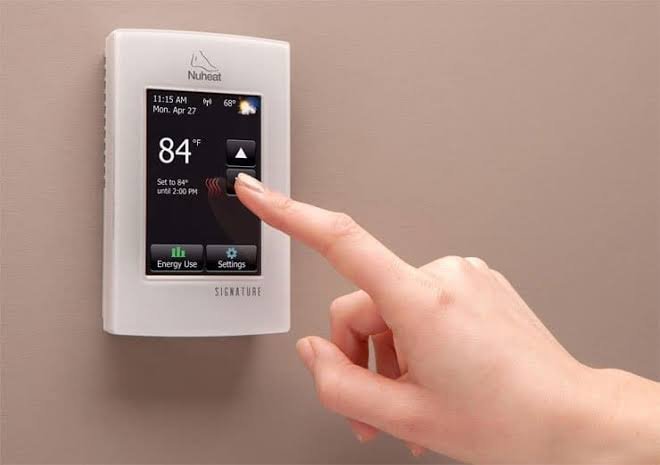A floor heat thermostat is an important part of any heating system that is meant to heat floors. This tool makes it easy for users to adjust and manage the floor heating system’s temperature. The thermostat lets you set the temperatures and plans you want, making sure you are most comfortable and using the least amount of energy. Modern floor heat thermostats make it easy and accurate to control the heating system. They have features like digital screens and settings that can be programmed. The thermostat is an important part of keeping your home warm, whether you have tile, laminate, or radiant floor heating.
Radiant Floor Heating
Radiant floor heating provides an efficient and comfortable way to heat your home by distributing heat evenly across the floor surface. This method relies on a series of tubes or heating cables installed beneath the floor, through which warm water or electricity flows. The floor heat thermostat plays a crucial role in controlling this system, ensuring optimal temperature levels throughout your space.
Radiant floor heating offers several advantages over traditional heating methods. It eliminates the need for bulky radiators or ductwork, allowing for more flexible interior design options. Additionally, radiant heat tends to be more evenly distributed, creating a cozy atmosphere without hot or cold spots.
Benefits of Using a Floor Heat Thermostat
A floor heat thermostat for heating system enhances the efficiency and convenience of radiant floor heating systems in several ways:
- Precise Temperature Control: Unlike conventional thermostats, which measure air temperature, floor heat thermostats regulate the temperature at ground level, providing more accurate and consistent heating.
- Energy Savings: By maintaining optimal temperature levels and avoiding overheating, floor heat thermostats help reduce energy consumption and utility costs.
- Programmable Settings: Many floor heat thermostats offer programmable schedules, allowing users to customize heating settings based on their daily routines and preferences.
- Remote Access: Some advanced models come with Wi-Fi connectivity, enabling remote access and control via smartphone apps, ensuring comfort and efficiency, even when away from home.
Factors to Consider When Choosing a Floor Heat Thermostat
Selecting the right floor heat thermostat depends on various factors, including:
- Compatibility: Ensure compatibility with your existing heating system, whether it’s hydronic or electric radiant floor heating.
- User Interface: Opt for a thermostat with an intuitive interface and easy-to-use controls for hassle-free operation.
- Programming Options: Consider your scheduling needs and look for thermostats with flexible programming features, such as daily or weekly schedules.
- Smart Features: Evaluate additional features like Wi-Fi connectivity, voice control compatibility, and energy usage tracking for added convenience and efficiency.
- Reliability: Choose a thermostat from a reputable brand with reliable performance and good customer reviews.
Installation Process
Installing a floor heat thermostat requires careful attention to ensure proper functionality and performance. Here’s a step-by-step guide:
- Turn Off Power: Before beginning the installation, shut off power to the heating system at the circuit breaker to prevent electrical accidents.
- Remove Old Thermostat: If replacing an existing thermostat, carefully remove it from the wall and disconnect the wires.
- Mount New Thermostat: Install the new thermostat on the wall at an appropriate height, away from direct sunlight, drafts, and heat sources.
- Connect Wires: Follow the manufacturer’s instructions to connect the wires from the heating system to the thermostat terminals, ensuring proper labeling and insulation.
- Power On: Once all connections are secure, restore power to the heating system and test the thermostat to verify proper operation.
Programming and Calibration
After installation, programming and calibrating the floor heat thermostat are essential for optimal performance:
- Set Time and Date: Begin by setting the current time and date on the thermostat to ensure accurate scheduling.
- Program Schedule: Use the thermostat’s programming interface to create a heating schedule that aligns with your daily routine, adjusting temperature settings for different times of day.
- Calibrate Sensors: If necessary, calibrate the thermostat’s temperature sensors to ensure accurate readings and consistent heating.
- Test Settings: Once programmed, test the thermostat’s settings to verify that the heating system responds as expected, making adjustments as needed for comfort and efficiency.
A floor heat thermostat is a crucial component of a radiant floor heating system, offering precise control, energy efficiency, and convenience. By understanding how these thermostats work, selecting the right model, and following proper installation and programming procedures, homeowners can enjoy comfortable, efficient heating year-round.







